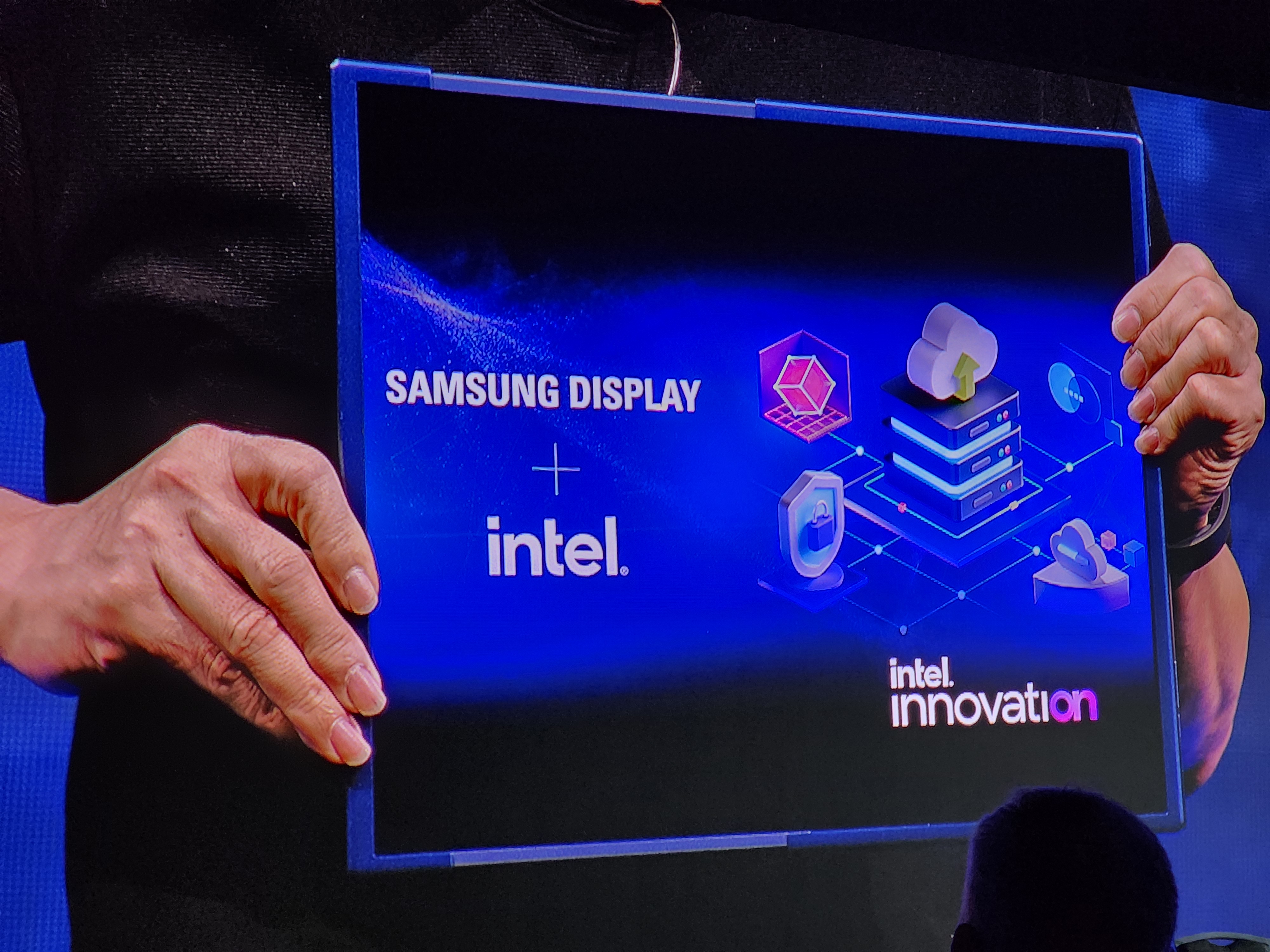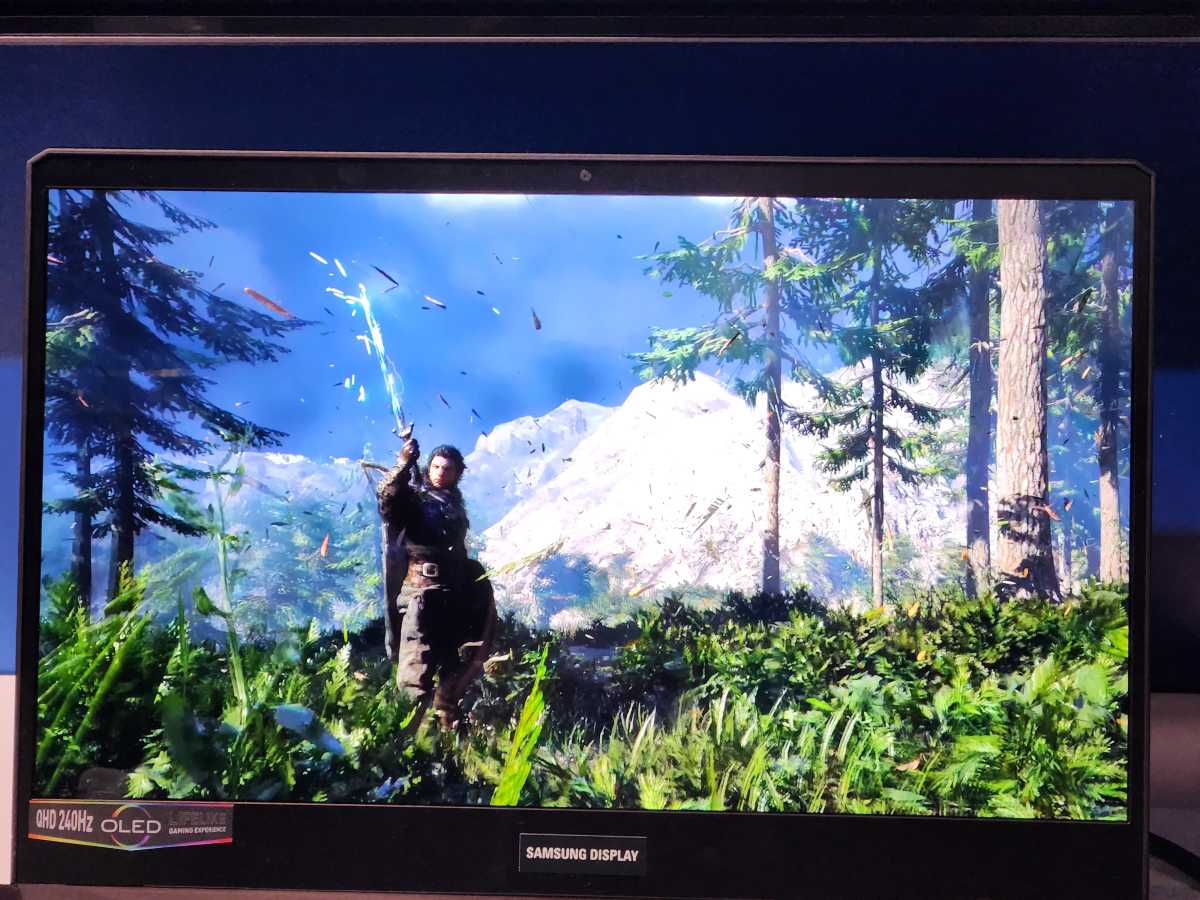Do you own a foldable PC? A dual-screen PC? How about a laptop with two screens? All but a few of you will answer “no.” So why was Samsung’s demonstration of a slideable OLED display this week important?
If you ask Intel executives, the answer is not always what you’d expect: Because it’s the other display technologies that benefit, and eventually you.
Samsung Display chief executive JS Choi appeared on stage on the first day of Intel’s Innovation conference on San Jose to show off a 17-inch “slideable” display, which pulls out horizontally to expand the screen. Choi said that the prototype, which has yet to get a production date or price, was chosen over a foldable option.
“As the leading provider of OLED technologies, this just convinces me that we have a lot more coming between us,” said Pat Gelsinger, Intel’s chief executive. Gelsinger earlier introduced the 13th-generation Core processor, code-named Raptor Lake, though he later downplayed an imminent 6GHz chip.


Betting on new technologies
The problem, unfortunately, is that the PC OEM market has shrunk. Michelle Johnston Holthaus, the head of Intel’s Client Computing Group, acknowledged that there are five leading PC makers, all competing with Apple. And while the PC market expanded during the pandemic, it has shrunk dramatically during this year, as Microsoft and analyst groups like IDC and Gartner reported. “And they don’t have as much money to invest right now because their, their margins are a bit slimmer,” Holthaus said, during a small roundtable with press and analysts this week.
A shrinking market typically means a more conservative investment strategy, given the risks of betting on the wrong technology. And Josh Newman, the interim head of Intel’s mobile processor business, acknowledged that a new technology like a sliding PC was indeed a bet, especially as “all of our research keeps coming back saying performance is the number one thing people want when they shop for a new PC,” he pointed out.
Intel, however, can afford to make those bets. The company maintains an “Intel Inside” marketing fund, plus an innovation fund, partnering with companies like Samsung to bring innovative technologies to market, Holthaus said. Folding PCs may not have taken off — yet — but other bets have paid off: after Intel launched the ultrabook in 2011, it worked with partners to improve thermal solutions and panels and touchscreens, Newman said.
“Five, six years later, you couldn’t find a $500 notebook that was greater than 18 millimeters thick,” Newman said.
The challenges: making it, and selling it
With a slider PC — or foldables — Intel faces two big challenges. First, there’s the technical problem itself of simply designing a PC with the new display technology. But second, there’s a convincing users to buy it.
A sliding PC may be the next big thing — or it may not. “If I look right now with the foldable, it’s a bet, and the slider will be too, and it’s a bet we want to explore,” Newman said. “This user experience is going to be something want to value and it’s going to start out ultra premium, but it’s also founded on research that says, give me as much screen area as I can get.”
One of the axioms in the scientific community goes something like this: the moon launches of the 1960s didn’t simply require learning how to fly men to the moon, but all of the corollary science that went along with it: survival in space, nutrition, and so on. Solving the problems of a slider PC means improving the conventional OLED displays that consumers will buy.
“They’re actually going to make their rigid OLED technology more accessible now because the problems they’re solving with power and timing controllers and all these things that make it so much harder in a large new foldable now make it cheaper to make a 14 inch OLED,” Newman said. “And that’s going to make its way through the mainstream market.”

Mark Hachman / IDG
As proof, Samsung Display showed off a 17-inch 165Hz 1440p OLED display at the Innovation conference, combining the high contrast ratio of Samsung’s screens with the high refresh rate gamers prefer.
Marketing a sliding PC, though, poses another problem: simply convincing users to buy it. Holthaus says that she sees the PC as the platform of choice, offering options that Apple simply has passed over.
“I think we have to drive the OEMs to get there, and we have to offer the consumers choice,” Holthaus said. When a consumer drives to Best Buy, they might see a number of choices, and it might be very hard to decide. But on Amazon, there are hundreds of options, making the choice even more confusing. It seems like Intel’s plan is to try and find the best aspects of both.
“I think part of part of spurring that innovation is getting it in the market plan in place, getting it in the hands of consumers and driving that flywheel of consumer demand, but it’s going to take Intel and our partners innovating and being willing to do that,” Holthaus said.




